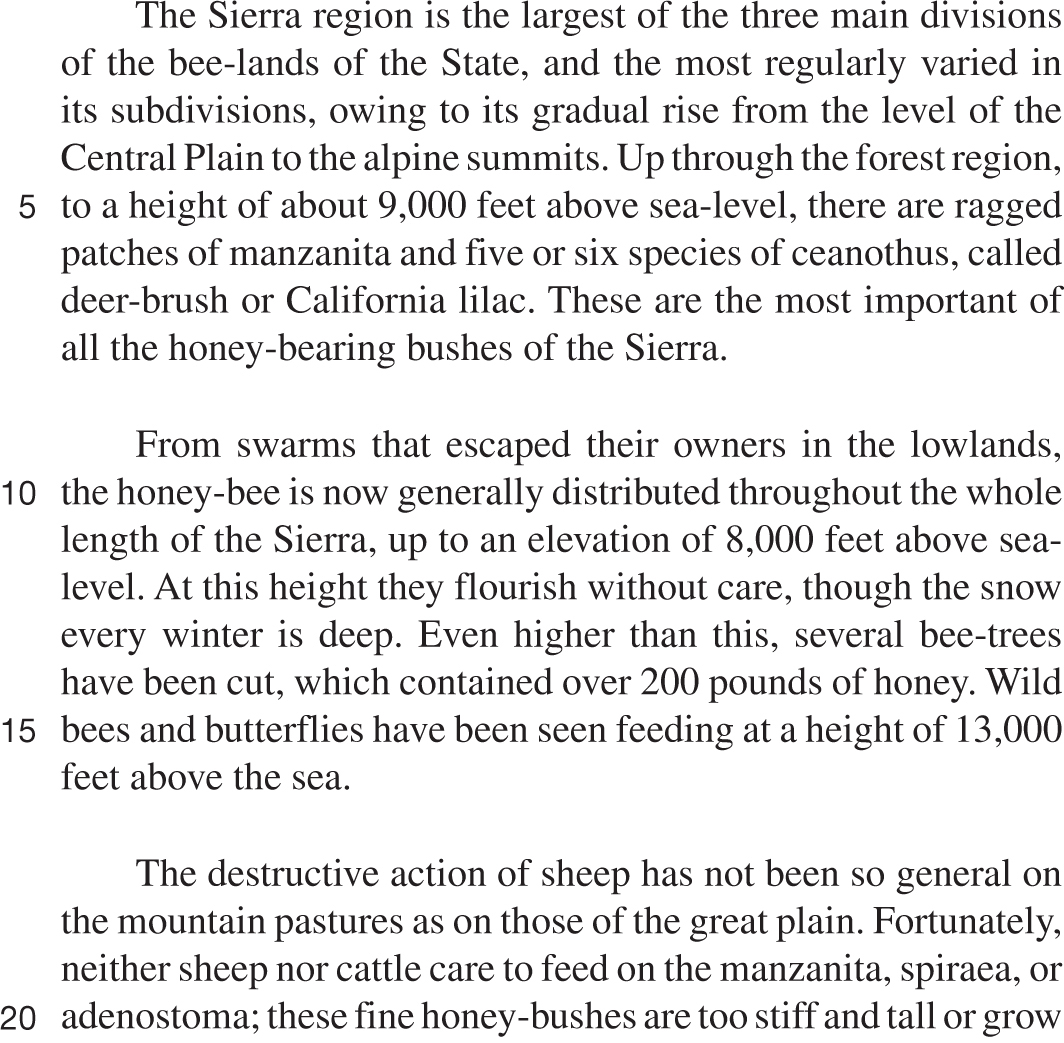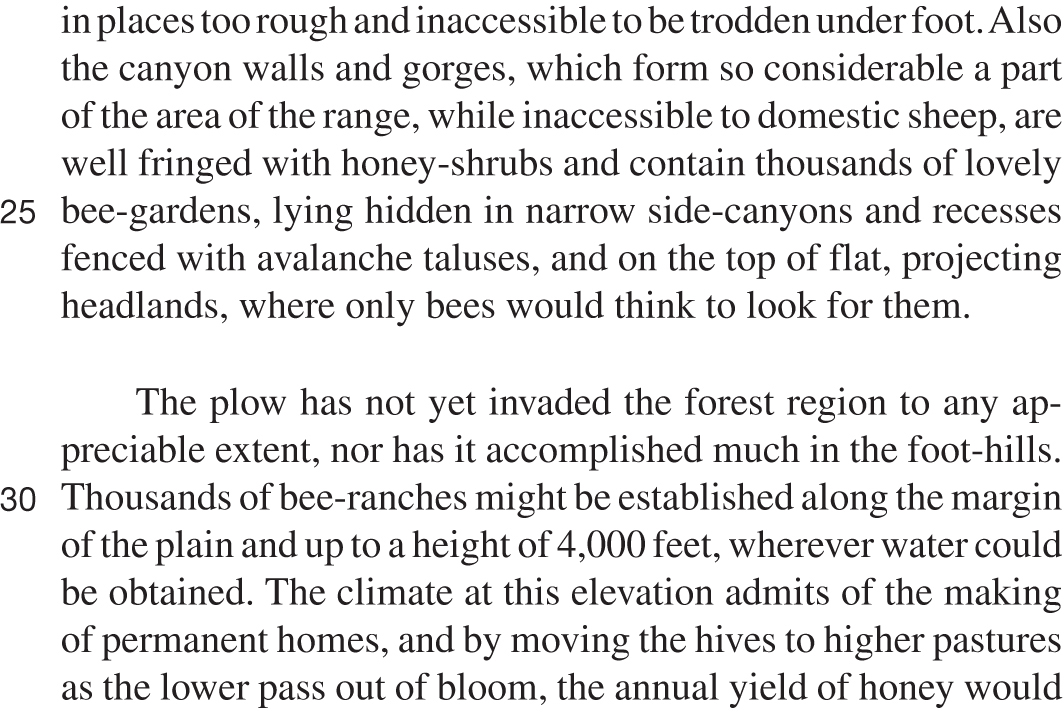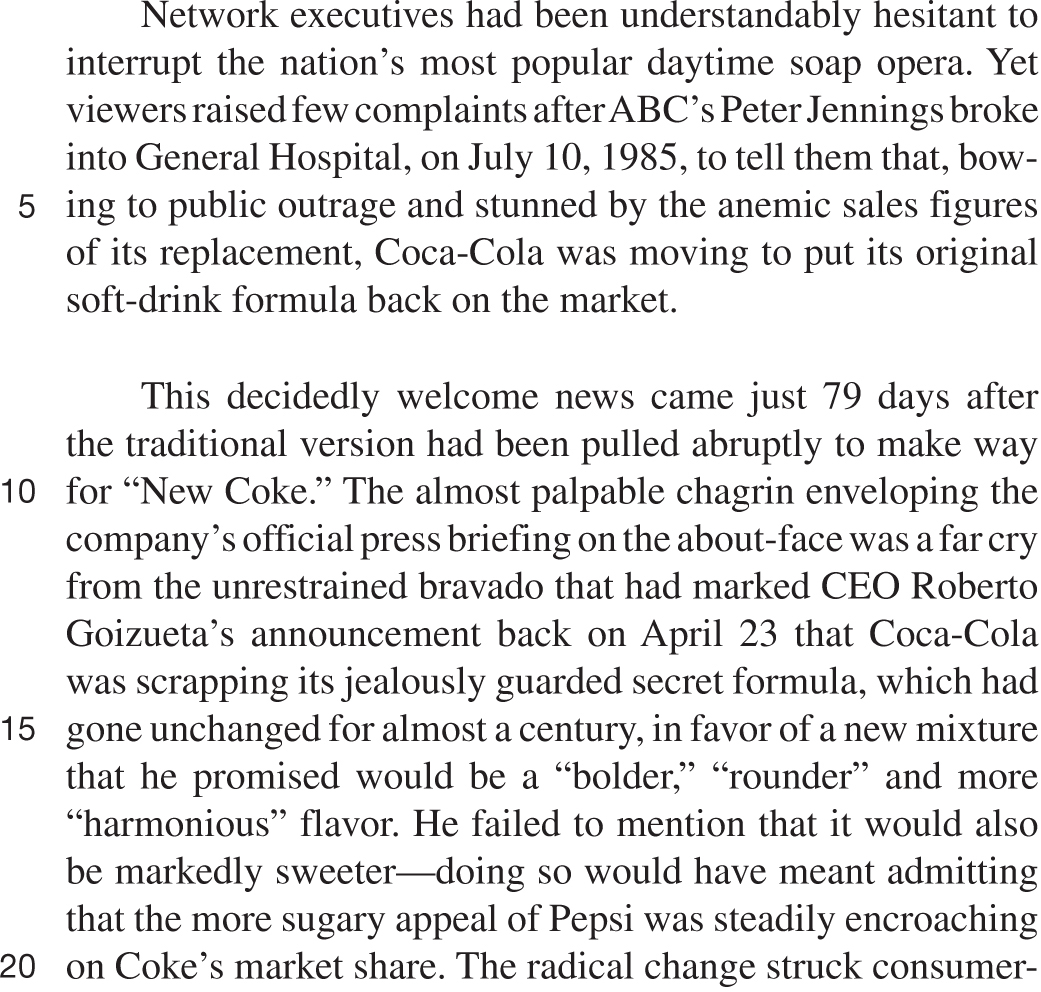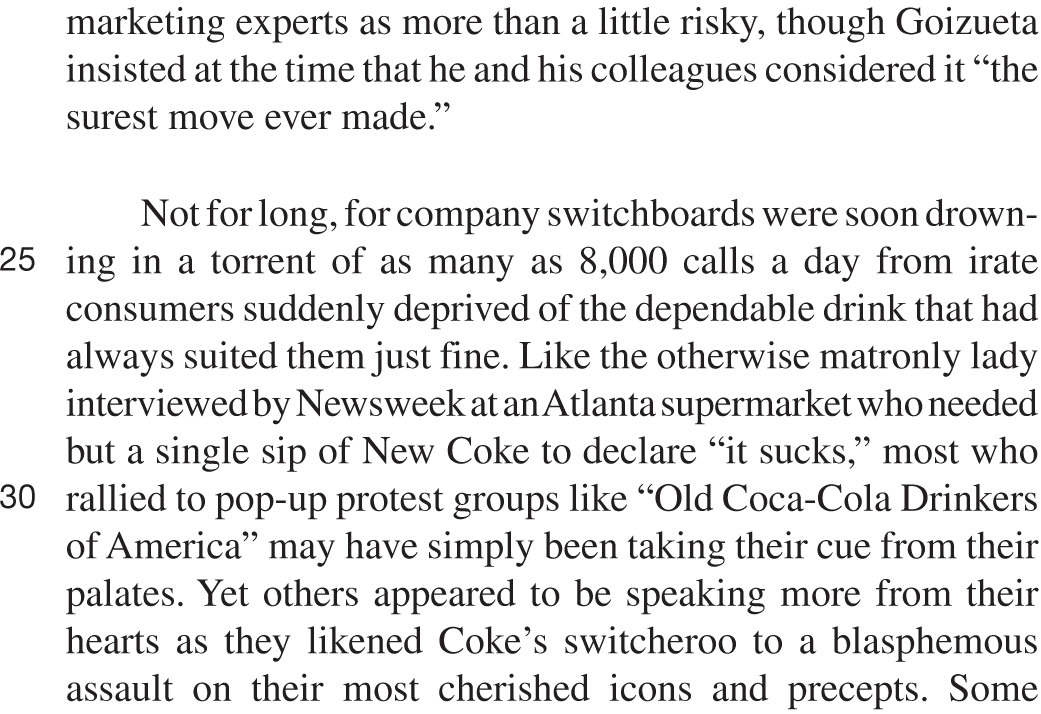Chapter 19
Advanced Reading Skills
In this lesson, we’ll help you hone your skills to crack specific question types and the most challenging of difficult text. We’ll also build on your mastery of the 4-Step Basic Approach by teaching you advanced POE (Process of Elimination) strategies.
LATER QUESTIONS
On the Reading test, some questions appear in unique formats that make them stand out among the Referral and Reasoning questions. These questions still require you to show your understanding of what is directly stated or what is implied. However, it’s useful to have specific strategies to crack these.
Negatives
The test writers can throw a curveball at you when they ask a question in the negative using EXCEPT, LEAST, or NOT to twist the task. These questions are inherently tricky. What’s right is wrong, and the right answer is the one that’s wrong. Clear as a bell, isn’t it?
No wonder it’s so easy for your brain to trip all over itself. You may even start off trying to find the one choice that is false. But you somehow lose sight of the trap, and when you come across one of the answers in the passage, you think, “Eureka! This answer is true. I found it right here.” Of course it’s “right” in the passage: Two other answer choices are somewhere in the passage as well. It’s the choice that isn’t in the passage that is the “right” answer.
The 4-Step Basic Approach
Step 1: Preview. Check the blurb, and map the questions. Underline lead words and star line or paragraph references.
Step 2: Work the Passage. Spend 2–3 minutes reading the passage.
Step 3: Work the Questions. Use your POOD to find Now, Later, and Never Questions.
Step 4: Work the Answers. Use POE.
Here’s a better approach. Let’s take a look at a question after it has been previewed in Step 1.
33. The passage mentions transportation of bees by river in all of the following countries EXCEPT:
A. Scotland.
B. France.
C. Poland.
D. Egypt.
When you map the questions, underline transportation of bees by river and countries, but don’t underline or mark EXCEPT. Wait until you work the question to deal with the trick.
This is a Referral question. If the negative weren’t there, it would be easy to answer. What country transports bees by river? But it wouldn’t be easy to find the answer, since there is no line or paragraph reference, and none of these lead words qualify as great.
Occasionally, an EXCEPT question will come with a line or paragraph reference to help narrow down your search, but most times they don’t. The answers can be scattered throughout the passage or grouped together in one paragraph.
That’s why you should always do a negative question Later. By the time you get to it, you should be able to identify where in the passage you’ll find at least some of the answers, or you will have narrowed down where to look.
When you do work this question, mark the EXCEPT so your eye can help your brain. You could double underline it. You can circle it and jot down two double exclamation points. You can cross it out altogether and write “True/False,” or “T/F.” Do whatever you need to keep yourself focused on the goal: Identify the one answer that is not like the others.
33. The passage mentions transportation of bees by river in all of the following countries EXCEPT:
A. Scotland.
B. France.
C. Poland.
D. Egypt.
For question 33, the answers happen to be grouped into the same paragraph, something you would have found easier to spot by using the great lead words in the answers. Always let the answers help in an EXCEPT question.
Now use POE. Locate the countries in the window of text, and read to find out which use rivers. When you find one, cross it off in the answers.

The correct answer is choice (A). All four countries are listed, but only Scotland doesn’t involve rivers.
Negative questions can be more complicated when the question type itself is Reasoning instead of Referral.
Particularly difficult are questions that ask what is NOT answered by the passage. These essentially require four times the amount of work, since you have to look for four answers instead of just one. Sometimes, the question is asked but not answered, and in others, the topic may not arise at all, both of which can frustrate you and make you waste a lot of time, scouring the passage over and over. That’s why Negative questions can be good candidates for Never. If you do work a negative question, always use POE. Cross off the ones that you know are true. If you’re stuck between two, or even among three, don’t waste that much more time before forcing yourself to guess and move on.
These next two questions would both be the last questions you do, and you would have gained a good grasp of the passage, even the details, by reading small windows as you worked the rest of the questions.
For the purposes of this exercise, don’t worry about time. Read the excerpt of the passage, and use POE.

36. Which of the following questions is NOT answered by information given in the passage?
F. How many bee ranches might be successfully established in the Sierra Mountains?
G. What types of flowers attract bees?
H. Where did the honeybees in the Sierra Mountains come from?
J. How much honey is produced by bee-trees in the Sierra Mountains?
38. Which of the following statements is LEAST supported by the passage?
F. The Sierra Mountains have the appropriate requirements to support bee ranching activities.
G. Bees flourish in the Sierra Mountains in part because the area is not hospitable to traditional cattle ranching.
H. The presence of bees in the Sierra Mountains prevents sheep from grazing in certain areas.
J. Bee-ranching is an economically viable and environmentally sound enterprise.
Here’s How to Crack Them
Work questions 36 and 38 as your last questions. For 36, double underline, circle, or cross off the NOT when you work it. As you find the answers to the answer choices—that is, the answers to the questions in the answer choices—cross off that choice. Choice (F) is answered in lines 31–33. Choice (G) is answered in lines 7–8 and again in 18–22. Choice (H) is answered in line 31–33. Choice (J) is never answered, and it is therefore the correct answer.
Question 38 is less specific and less dependent on detail than is question 36. Remember, the answers to your questions should all agree with each other, at least in terms of reinforcing the main points. Double underline, circle, or cross off the LEAST, and use POE for any answer that doesn’t reinforce the theme in the rest of the questions. Choice (H) is not supported by the passage and is therefore the correct answer. Choices (F) and (J) describe positive benefits of bees to the Sierra Mountains, and they would likely be the easiest choices to eliminate right away. Choice (G) is supported by lines 18–28.

Vocabulary in Context
In some Referral questions, you’ll have to determine the meaning of a word or phrase as it’s used in context. The level of the vocabulary can vary, and most of these questions use relatively common words, but their meaning in the passage can be figurative more than literal.
You don’t need to read a full window of 5–10 lines for Vocabulary in Context questions, but you do need to read at least the full sentence to determine the meaning in its context. Cross off the phrase, and try to substitute your own word. Then move to the answers, and use POE to eliminate choices that don’t match your word. The correct answer has to be the literal definition of the meaning. Don’t choose a word that could be used figuratively to convey the meaning.
Don’t Know the Word?
If the Vocabulary in Context question tests a more difficult word that you’re familiar with, you can still try to read the context to see if you can come up with your own word that fits the meaning, and then use POE among the answers. But if you can’t eliminate three choices, guess from what’s left and move on. Similarly, if you are pressed for time and need to get to the next passage, mark this a Never. Choose your LOTD and move on.
Let’s try an example.


37. As it is used in lines 33–36, the phrase admits of most nearly means:
A. makes possible.
B. grants permission.
C. confesses guilt.
D. leaves out.
Here’s How to Crack It
Admits is a common word, but it has different definitions depending on the context. The phrase admits of may be a less common phrase, but if you cross it out and read the sentence, you may come up with a word like “allows.” Choice (A) works the same way “allows” does, and it’s the correct answer. Choice (B) is close, but grants is a good example of a word that could be used figuratively to mean “allows.” It doesn’t literally mean “allows.” And permission doesn’t work for the literal meaning at all. A climate can’t literally permit anything. Choice (C) is tempting if you don’t use the context of the sentence, since confessing guilt is a correct definition of admits in another context.

Roman Numerals
Roman numeral questions show up on the Reading test very rarely. They can be used in a Referral question or in a Reference question. They may come with line references or great lead words, or they may not. Use those factors to determine when to work the question, but in general, Roman numeral questions are good choices for Later when you know the passage better.
When you do work a Roman numeral question, be efficient. Choose the easiest of the Roman numerals to look up in the passage. Once you know yes or no, go to the answer choices and use POE. Look up only the Roman numerals that are still in the running among the answers.
Let’s try an example.

39. The passage describes the movement of the bees during the day as which of the following?
I. Drowsy and moderate
II. Thrilling and quivering
III. Cool and still
A. I only
B. III only
C. II and III only
D. I and II only
Here’s How to Crack It
Work efficiently. Use the lead words in the Roman numerals to find them in the passage, beginning with I. Drowsy and moderate are used in lines 5–10 to describe the bees in the morning. Eliminate all choices without I, which leaves you with just II to review: I and III are not both in any choice. Thrilling and quivering are used in line 9 to describe the bees at high noon. Choice (D) is correct.

Dual Reading Passages
You may also see a “Dual Passage” in Reading. You’ve already seen passages like this in the Science: They give two separate passages with questions about each passage individually and then passages about both together.
As such, these passages require a slightly different approach. The passages require a bit more reading than the single passages, but they are also susceptible to more strategic thinking.
Here’s the strategy we’ll be using in this section:
-
Preview. Read the blurb, and map the questions as you would in a typical passage. Do a quick count of how many questions are asked about each passage.
-
Work the Popular Passage. If one passage has more questions than the other, work that one first. Take the questions that ask only about that passage and reorder them chronologically, reading through the passage as you do the questions.
-
Work the Other Passage. Before you jump to the questions that deal with both passages, work the other the same way you worked the first. Reorder the questions chronologically, and read through the passage as you answer the questions in the new chronological order.
-
Work the Questions that Deal with Both Passages. By this point, you’ve hopefully got a good sense of what unites the passages. Answer the questions that deal with both passages, and make sure that these answers agree with the others regarding each individual passage!
A NOTE ON THE GOLDEN THREAD
As you may have noticed, correct answers seem to repeat in a lot of ACT passages. It almost seems like sometimes if you get one answer, you can get three more with the same information. We call this phenomenon “The Golden Thread”: some main idea or topic that threads through many of the answer choices.
On Dual Passages, it’s more important than ever to find the Golden Thread. If you think about it, the questions that ask about both passages are really just variations on the theme, “What do these two passages have to do with each other?”
As you read through the two passages separately, try to answer this question even if only in a vague way. “What’s the link between these two passages?” “Why are these passages on the same page together?” Any kinds of answers you can generate to these “Golden Thread”-type questions will help you down the line.
Here is what one of the passages will look like. Note how ACT has kindly separated the questions for you.
SOCIAL SCIENCE: Passage A is adapted from the 2015 Time Magazine article “What We Can Learn From Coca-Cola’s Biggest Blunder” by James C. Cobb. Passage B is adapted from the 2007 Washington Post article “The Flop Heard Round the World” by Peter Carlson.
Passage A
Passage B
Questions 11–15 ask about Passage A.
11. Which of the following statements regarding New Coke is best supported by Passage A?
A. Despite record sales, New Coke was pulled from the market just 79 days after its release.
B. New Coke was launched in an attempt to compete with a rival soft drink manufacturer.
C. Coca-Cola executives were initially hesitant to launch New Coke.
D. In public statements, Coca-Cola executives eventually admitted the failure of New Coke.
12. Which of the following explains how Passage A characterizes the failure of New Coke?
F. It happened gradually and was initially unnoticed by Coca-Cola executives.
G. It happened quickly and dramatically.
H. It was spearheaded by underground consumer protest groups.
J. It occurred only after the renewed success of the classic formula.
13. Passage A quotes Roberto Goizueta at the end of the second paragraph in order to
A. support the idea that the launch of New Coke was inherently risky.
B. suggest that consumers and executives rarely agree on matters of product innovation.
C. emphasize the misguided sentiments of the promoters of New Coke.
D. provide further evidence that Pepsi would continue to dominate the soft drink market.
14. Which of the following events referenced in Passage A occurred first chronologically?
F. Peter Jennings’ announcement to soap opera audiences
G. The launch of New Coke
H. New Coke’s disappointing sales
J. Increased market share by Pepsi
15. As used in line 34, the “blasphemous assault” is most nearly similar to
A. “a torrent of as many as 8,000 calls a day” (line 25).
B. “pop-up protest groups” (line 30).
C. “burning the flag” (line 35).
D. “unrelenting backlash” (line 39).
Questions 16–17 ask about Passage B.
16. Which of the following statements in Passage B is used to convey irony?
F. “hot new car” (line 48)
G. “much-ballyhooed” (line 53)
H. “strip-tease dancer” (line 67)
J. “legendary blunder” (line 85)
17. Much of Passage B focuses on Don Mazzella because
A. he was typical of the type of customer for whom the Edsel was created.
B. he waited in line to buy the Edsel on the day of its unveiling.
C. he was too young to properly appreciate the Edsel.
D. his reaction to the Edsel was typical of that of many Americans in the 1950s.
Questions 18–20 ask about both passages.
18. A similarity between the two passages is that they both
F. examine their topics in an objective manner.
G. describe the reactions of ordinary people to new products.
H. assert that product innovations are generally unwise ventures.
J. incorporate advice to corporations about how to avoid product failure.
19. An element in Passage B that is not present in Passage A is a reference to
A. specific information regarding product market share.
B. public opinion.
C. other failed products.
D. quotations from experts.
20. If advertisers for New Coke had used tactics similar to those used to promote the Edsel, they would most likely have
F. run ads promoting a new secret formula but not allowed anyone to taste it until the day it was launched.
G. kept the launch day of New Coke a secret until its unveiling.
H. limited the number of ads promoting New Coke.
J. promised that it would improve upon an old formula.
How to Work Through a Dual-Passage Reading Section
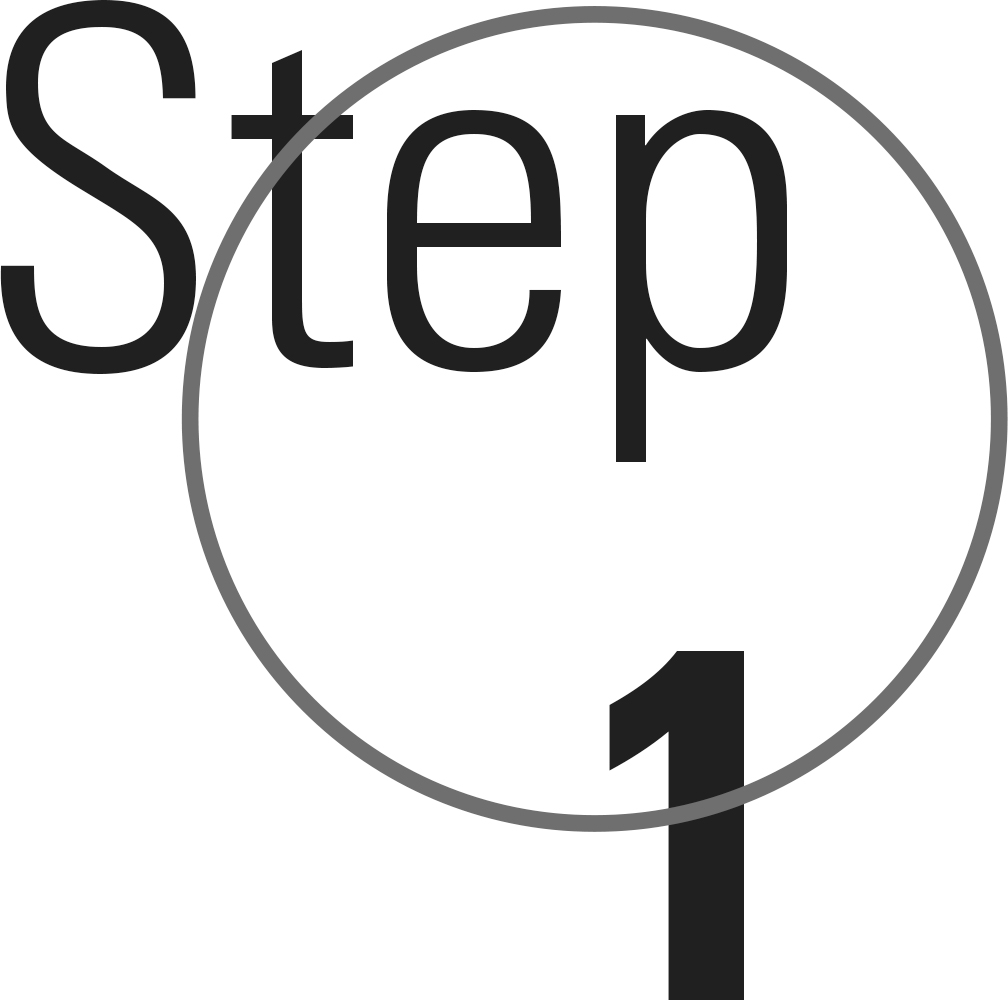
Step 1: Preview
As the blurb indicates, these passages are adapted from a couple of essays. It doesn’t tell much more than that. Lead words include New Coke, failure, Roberto Goizueta, Jennings, Pepsi, blasphemous assault, Don Mazzella, Edsel.
Then, a quick count will show that there are more questions about Passage A than there are about Passage B. Let’s do Passage A first!
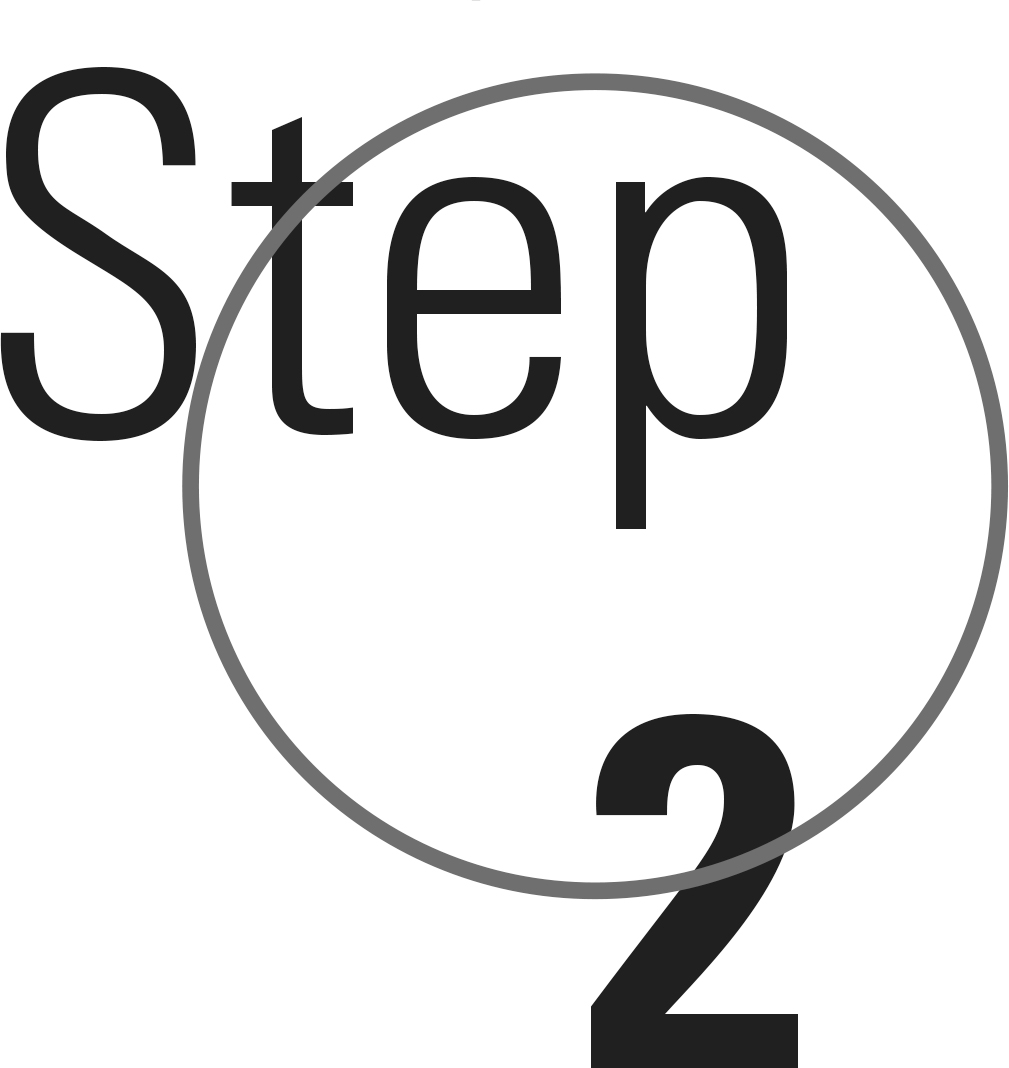
Step 2: Work the Passage
Before you start reading, rearrange the questions chronologically. Use lead words where there aren’t any line references. In this case, it looks like the questions will appear in roughly this order: 14, 13, 15. Then come the general questions 11 and 12.
Read through the passage and stop as you come to the lines in each question. Use the techniques you’ve learned throughout these reading chapters! POE still applies like crazy, and bad answers are just as bad here as they are in any other passage.
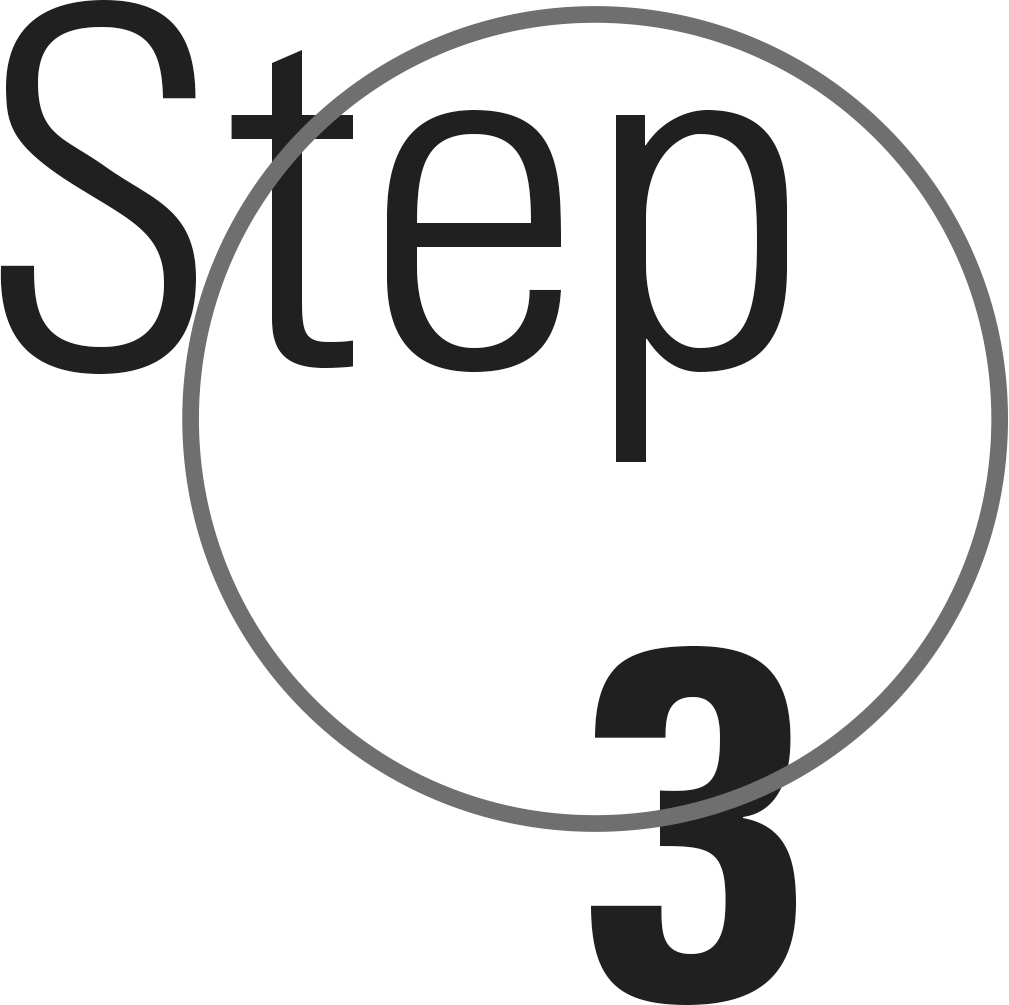
Step 3: Work the Other Passage
Rinse and repeat! Now work questions 16 and 17. Work through these questions, always looking to eliminate bad answers.

Step 4: Work the Questions that Deal With Both Passages
By this point, you have hopefully noticed what unites these passages. Passage A describes the introduction of—and negative reaction to—New Coke. Passage B describes the introduction of—and negative reaction to—the Edsel.
Use your POOD to answer the remaining questions!
Check your answers here:
CRITICAL READING
Your use of the 4-Step Basic Approach and your personal order of difficulty (POOD) of both passages and questions should by now make you feel more confident on the Reading test. But you also may still be struggling with time and feel that you just can’t work fast enough to get to enough questions.
In Chapter 18, we discussed ways to use your time better when you preview and work the passage. But you may also be wasting time when you work the questions, reading and rereading the window of text, trying to figure out what it’s saying. You may have eliminated two answers, but when you’re still not sure what the correct answer is, what do you do? You read the window yet again, desperate to figure out the meaning and answer the question in your own words.
We’ve all been there. Part of what makes standardized tests so evil is how they encourage us to listen to our worst instincts. You can’t treat the Reading test as you would a school assignment, and you can’t fall prey to your own panicked responses. You have to develop both strategies and skills specific to this test.
Critical Thinking
The key to better reading skills is to think better, which means to think critically. Getting lost in even a small window of text that makes no sense is like getting lost on unfamiliar roads. You don’t stare down at the yellow line. You look around, looking for landmarks and road signs, trying to figure out where you are and where the road is going.
When you’re lost in a tough section of text, use topic sentences and transitions as your landmarks and road signs. Don’t try to understand every single word. Use the topic sentences to identify what the main point of the paragraph is. Look for transitions to see if points are on the same side or different sides from each other.
Topic Sentences and Main Points
Think of how you write papers for school. A good topic sentence makes clear the main subject of the paragraph, and it may even provide the author’s main point on the subject. The rest of the paragraph will be details or examples that explain that point, and it may also include a more explicit conclusion of the main point. If you don’t understand the details, read the main point to know what they mean. Examples and details usually come right before or right after the main point. If you don’t understand the details, read the sentence before or after to see if it gives you the main point. If you don’t understand the main point, read the sentence before or after to see if the details explain it for you.
Let’s see how this works. Read the following topic sentence.
Studies of American middle and high school students have shown that there is considerable uncertainty among students about what behaviors count as cheating.
What’s going to come next in the paragraph? It could be examples of the behaviors. It could be an explanation of why students are uncertain. It could even be a statement of a different study that contradicts this one. You would be safe anticipating any of those outcomes, but the anticipation is the key. Don’t sit back and wait to see where the road is going. Lean forward and look for the fork in the road or the detour sign telling you to turn around. In other words, look for transitions.
Transitions
The first word or phrase after the topic sentence can tell you what direction you’re heading.
Let’s look at some choices for our cheating sentence.
If the next words were In particular, what does that tell you is coming next? Examples of the behavior.
If the next word were However, what does that tell you is coming next? A contradiction to this study.
Transitions play a key role in critical thinking. Look for transitions to announce additional points, contradictory points, cause and effect relationships, examples, or conclusions. Here are just a few common transitions.
Additional Points
And
Also
As well
In addition
Furthermore
Moreover
Contradictory Points
Although
But
Even though
However
Nevertheless
On the other hand
Rather
Yet
Cause and Effect Relationships
Because
Since
So
Examples
For example
In particular
Such as
Conclusions
Consequently
In other words
That is
Therefore
Thus
Modifiers
Nouns and verbs reliably give you the facts in a statement, but they don’t necessarily provide the author’s point. Look at the two adverbs in the prior sentence and see how they helped shape the point. Reliably means you can infer that nouns and verbs almost always give facts. Necessarily modifies the verb phrase don’t provide. Without it, you could infer that nouns and verbs never give you the point. Adjectives and adverbs are just as useful as transitions, conveying the author’s opinion on what would otherwise be a statement of fact.
Consider this sentence.
Surprisingly, students do not consider sharing notes to be cheating.
The point of this sentence is that sharing notes is a form of cheating, and the author believes students should know this. If you removed surprisingly from the sentence, it’s just a factual statement of what students think. On the Reading test, most Reasoning questions involve the author’s opinion or main point, or as ACT puts it, “the implied meaning.”
Try another.
Students offered a refreshingly candid explanation for their behavior.
Refreshingly means that the author judged the admission as unexpected but welcome. Candid means the students were honest and open.
Translation
When you’re struggling to make sense of a window of confusing text, look for transitions and modifiers to help you determine the main point. You may be in the thick of a body paragraph with the topic sentence in the rearview mirror. Instead of focusing on every single word, use the transitions and modifiers to get the general direction of points and the connections between them.
Let’s look at a tough window to see how this works.


Here’s How to Crack It
Focus on the transitions and modifiers. Strikingly tells you that the author finds the students’ tolerance of cheating noteworthy and unusual. The key verb phrase cannot be explained directs you away from what is not the cause and the transitions but and rather direct you to what is the cause. Even if you didn’t understand all the vocabulary words, the transitions act as huge road signs that identify the most important part of the sentence. Students don’t cheat because of immorality and laziness but because high-stakes tests have made things ruthless and desperate. Even just knowing which sentence, or which part of the sentence, to focus on will help, along with POE, to find the right answer.

ADVANCED POE SKILLS
When you’re stuck on a confusing window of text, the best use of your time is spent working the answers. Reread your window, even to spot transitions and modifiers, in conjunction with working the answers.
In an ideal situation, you read a question, read the window of text looking for your answer, answer the question in your own words, and then work through the answer choices looking for the best match, using POE to get rid of those that don’t.
But situations are seldom ideal on the Reading test. When you don’t quite understand the window and therefore have no clue about the answer, go straight to working the answers.
The Art of Wrong Answers
If you worked for ACT, you’d have to sit in a cubicle all day writing test questions. The easy part of the job is writing the correct answer. You may even know that before you write the question. The harder part is coming up with three wrong answers. If you didn’t write great wrong answers, everyone would get a 36. So you have to come up with temptingly wrong answers.
Let’s take a look at some ways to make wrong answers.
Read the following question, correct answer, and text. We don’t care about the right answer in this exercise, so you can read it before you read the window.
13. The main point of the fifth paragraph (lines 40–48) is that:
A. cultural norms affect how students judge cheating ehaviors.
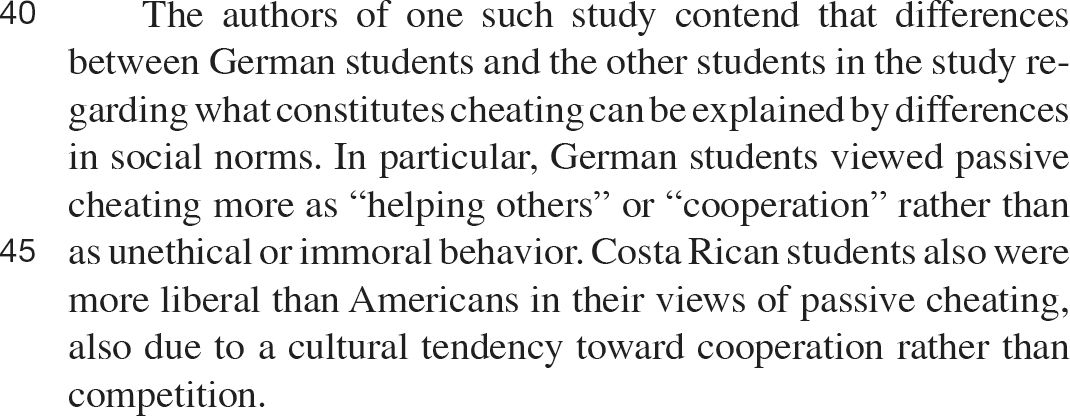
Our goal here is to examine why the three wrong answers are wrong.
B. German students consider passive cheating to be unethical and immoral.
Look carefully at line 45. Choice (B) took tempting words out of the passage and garbled them. The passage disproves this answer.
C. American students have a less liberal view of passive cheating than do Costa Rican students.
Since lines 45–48 say Costa Rican students are more liberal than Americans, (C) is true. But it’s not the correct answer because it’s not the main point of the paragraph.
D. Russian students do not consider passive cheating to be unethical.
Russian students are not mentioned in this window and have instead been taken from a different window.
Answers can be wrong because they don’t match what the passage says, because they answer the wrong question, or because they’re not even found in the right window. But no matter how tempting or obvious wrong answers are, they are all easier to understand than 5–10 lines of text, simply because they’re shorter. So when you’re stuck on tough questions on tough windows, work backwards with the answers.

Work Backwards
Instead of rereading the window to try to determine the meaning, read the answer choices for their meaning. Then see if you can match each back into the passage.
Read to understand the meaning of the answer choices instead of rereading the window.
-
Look for lead words or phrases in the answer choices.
-
Determine if the words match those found in the window.
-
Use POE to cross off choices that don’t match the window.
Let’s see how this works. Read the following question and window.

13. It can reasonably be inferred that the author provides the dictionary definition of cheating (lines 1–2) in order to:
Take the answer choices one at a time. In each choice, we’ve put in bold a lead word or phrase in the answer. Can you match these words, or a paraphrased meaning of them, in the window of text?
A. argue that passive behaviors are more morally acceptable than active behaviors.
Morally acceptable appears in line 9, but the phrase isn’t used to compare passive and active behaviors. Tempting, but wrong.
B. illustrate what behaviors will get students expelled or suspended.
Expelled and suspended, or any paraphrases of those words, don’t appear anywhere in the window, so (B) can’t be the right answer.
C. prove that students deliberately violate established rules.
Deliberately violating established rules appears in line 2, but it’s used as part of the definition of cheating, not as proof of students’ conduct. We’ve eliminated three answers, so (D) must be right. But always check all four answers to be sure the one you choose is better than the three you’ve eliminated.
D. show that students may not consider their own behavior to be cheating.
Students’ own behavior is in the last sentence, and (D) matches well the point of that sentence.
Try another example. Choose your own words or phrases out of each answer to work backwards with. Does the passage match the answer?


12. It can reasonably be inferred by information in the seventh paragraph (lines 57–67) that:
F. cheating in Soviet Russia was widely rejected as an acceptable response.
G. the cold climate in Russian classrooms motivated students to cheat.
H. the normative climate that produced cheating in Soviet Russia may be explained by the role of the Communist legacy.
J. students in Soviet Russia failed to provide justifications for their unethical behavior.
Here’s How to Crack It
In (F), you could choose widely rejected and try to place it in line 66. The passage disproves this, stating that cheating is widely accepted, so cross off (F). Choice (G) misuses the word climate, but it also discusses classrooms, which are nowhere to be found in the passage. Eliminate it. Choice (H) offers Communist legacy, an easy lead word phrase to locate in the passage. Choice (H) could match lines 62–64, so keep it. Choice (J) offers justifications for their unethical behavior, words right out of the passage. But the passage doesn’t state that Russian students failed to provide them. The correct answer is (H).

Reading Drill 2
Use the 4-Step Basic Approach on the following passage, and apply your advanced reading skills. Time yourself to complete in 8–10 minutes. Check your answers in Chapter 25.
Passage I
HUMANITIES: The following passage is adapted from the article “Conquering Jazz” by Patrick Tyrrell (© 2006 by Patrick Tyrrell).




1. Which chord, if any, does the author eventually conclude is the most confusing jazz chord to play?
A. The passage does not indicate any such chord.
B. C-sharp diminished
C. Major sevenths
D. F-sharp minor-7 flat-5
2. As it is used in line 47, “magician’s secrets” most nearly means:
F. information on how to play jazz.
G. forbidden bits of knowledge.
H. instances of harmless trickery.
J. the true nature of a private person.
3. As portrayed by the author, Victor responds to the author’s invented chord with what is best described as:
A. amazement.
B. jealousy.
C. confusion.
D. nonchalance.
4. The author states that “The Real Book” was something he explored for a few:
F. years.
G. months.
H. weeks.
J. days.
5. The details in lines 40–44 primarily serve to suggest the:
A. aspects of jazz’s complexity that more mature listeners enjoy.
B. lack of depth and detail found in rock and classical music.
C. confusion and awkwardness of standard jazz chord values.
D. unpleasantly bitter taste of candy that develops with age.
6. In the context of the passage, the author’s statement in lines 68–71 most nearly means that:
F. he was so overworked that his hands could still move, but his thoughts were turned off.
G. he had accidentally trained his hands to resist being controlled by his brain.
H. it was easier to decode the exotic jazz chords by pointing at them with his hands.
J. his hand was capable of playing music that his mind was incapable of fully comprehending.
7. The author implies that F-sharp minor-7 flat-5 is an example of a chord that he:
A. had little trouble decoding now that he had “The Real Book.”
B. had previously only seen during his travels abroad.
C. knew how to play on guitar but not on a piano.
D. initially found confusing and struggled to understand.
8. The passage supports which one of the following conclusions about Victor?
F. He played music with the author until the author turned 30 years old.
G. He gave his copy of “The Real Book” to the author as a gift.
H. He was at one time a member of multiple musical groups.
J. He invented a chord and named it C-sharp diminished.
9. The passage is best described as being told from the point of view of someone who is:
A. reviewing the chain of events that led to his career in jazz.
B. discussing reasons why jazz is less complicated than it seems.
C. relating his impressions of jazz music and his attempts to play it.
D. highlighting an important friendship that he had in college.
10. Assessing his early and later experiences with “The Real Book,” the author most strongly implies that it was:
F. pleasantly strange to begin with but annoyingly familiar by the end.
G. initially difficult to decipher, but ultimately manageable following diligent practice.
H. almost impossible to understand because its pages didn’t look like sheets of classical music.
J. very useful as a learning tool, but not useful for more profound study.
Summary
-
Work special question types Later. They require more work than a typical question, and they will become easier to do the later you do them.
-
Double underline, circle, or cross out negative words EXCEPT, LEAST, or NOT. Use POE to cross off answers that are found in the passage.
-
For Vocabulary in Context questions, read the entire sentence. Cross off the word or phrase and come up with your own word. Use POE to eliminate answers that don’t match your word.
-
Work Roman numeral questions efficiently, using POE.
-
Don’t waste time on special question types if you can’t eliminate three answers. Guess from the choices that are remaining and move on.
-
Use topic sentences, transitions, and modifiers to help translate confusing windows of text.
-
Work backwards with answer choices. Try to match the answer to the passage instead of the passage to the answer.
